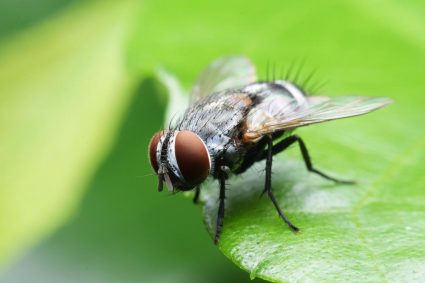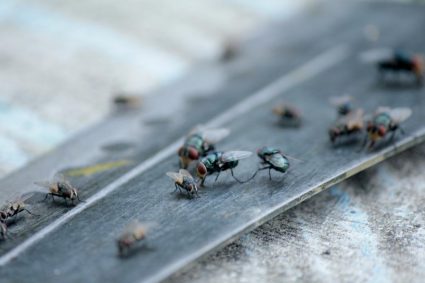
Fleas are a common concern for pet owners and households across the globe. These tiny, blood-sucking parasites can cause discomfort for both pets and humans, leading to itchy bites and potential allergic reactions. To keep your home and pets flea-free, it’s important to understand how often to spray for fleas.
The frequency of spraying for fleas depends on the product used and the severity of the infestation. Pet flea sprays may need to be reapplied every few days to few weeks, while home sprays can be used up to twice daily. Outdoor areas typically need reapplication every 4-5 weeks. However, the presence of pets, geographical location, climate, and seasonality can all affect how often you need to spray for fleas. It’s important to monitor your environment and adjust your treatment schedule as necessary.
The Frequency of Spraying for Fleas
The frequency of spraying for fleas depends on the product you choose to use and the severity of the flea infestation. Pet flea sprays may need to be reapplied as often as every few days, up to every few weeks. Some home sprays, such as Vet’s Best Flea and Tick Home Sprays, can be used up to twice daily within a 24-hour period, allowing 2-4 hours between applications.
However, the frequency of reapplication depends on the needs of your home; it’s recommended to monitor the area and reapply at a suitable schedule for your environment. For outdoor areas, treatments are typically effective for 4-5 weeks, so reapplication should happen every 4-5 weeks.
Signs of a Flea Infestation
Recognizing the signs of a flea infestation is crucial to determining how often to spray for fleas. Signs can include excessive scratching by your pet, hair loss, welts and red skin, bites around your ankles and knees, and the presence of flea dirt (small red-brown or black specks).
Flea infestations can also lead to more serious health issues for your pets, such as anemia indicated by pale gums. Regular vet check-ups can help detect early signs of fleas and prevent infestations from getting out of control.
Factors Influencing The Frequency of Flea Treatments
Several factors can influence the frequency of flea treatments. Geographical location and climate can affect flea populations and therefore treatment frequency. Seasonality also impacts flea infestations, with the highest infestation rates often observed in warmer, wetter months.
The presence and lifestyle of pets in your home can also influence how often you need to spray for fleas. Regularly treating your pets with appropriate flea treatments and maintaining a clean environment can significantly reduce the need for frequent flea spraying.
Risks and Downsides of Spraying for Fleas Too Frequently or Infrequently
Overuse or underuse of flea sprays can carry several risks. Overuse can lead to human health risks, including dermatitis and respiratory irritation, as well as potential toxicity in pets. Underuse, on the other hand, may not effectively control flea populations, leading to a continuation of flea activity.
Furthermore, overusing flea control products may contribute to the development of resistance in flea populations, making it more difficult to control infestations in the future.
Non-Chemical Methods for Controlling Fleas
Apart from flea sprays, there are several non-chemical methods for controlling fleas. These include regular use of a fine-toothed flea comb, bathing your pet regularly and using a vinegar rinse, adding a small amount of garlic to your pet’s food (consult with a veterinarian first), using diatomaceous earth or nematodes, and maintaining a clean environment.
These methods can be a safer alternative to chemical sprays and can be used as part of a comprehensive flea control program.
Conclusion
Flea control is a vital part of maintaining a comfortable and healthy environment for both you and your pets. Understanding the frequency of flea treatments and the factors that influence this can help you better manage and prevent flea infestations. Always consult with your vet to choose the most suitable flea treatment for your pets and home, and remember, fleas aren’t seasonal – they’re a year-round risk. Therefore, you should treat your pets for fleas year-round, not just in the warmer months.
Frequently Asked Questions
What are the symptoms of flea bites on humans?
Flea bites on humans often appear as red bumps, typically around the ankles and legs. They can be itchy and may cause a red “halo” around the bite center. Some people may also experience allergic reactions, leading to hives or rash.
Can fleas live in human hair?
While fleas can jump onto humans and bite, they prefer to live and lay eggs on furry animals like cats and dogs. Fleas are unlikely to infest human hair.
Can I treat my pet for fleas without using chemicals?
Yes, there are several non-chemical methods for controlling fleas, such as using a fine-toothed flea comb, bathing your pet regularly, and using a vinegar rinse. However, severe infestations may require chemical treatments, so it’s best to consult with a veterinarian.
Can fleas become resistant to flea sprays?
Yes, overuse of flea control products can contribute to the development of resistance in flea populations. This makes it more difficult to control infestations in the future.
Is there a specific time of the year when fleas are most active?
Fleas are most active during warmer, wetter months. However, they can survive indoors year-round, so it’s important to maintain regular flea treatment schedules.











